DOI:
10.1039/B924763G
(Editorial)
Analyst, 2010,
135, 18-20
Editorial Board profiles
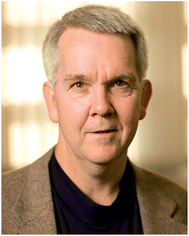 |
| | Plate1 Paul Bohn | |
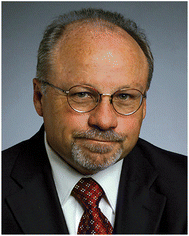 |
| | Plate2 Steven A. Soper | |
Steven A. Soper graduated with a Ph.D. from the University of Kansas in 1989 and then served as a Post-doctoral Fellow at Los Alamos National Laboratory. He joined the faculty at Louisiana State University (LSU) in 1991 and was named the William L. & Patricia Senn Professor in 2002. He is also a Professor of Mechanical Engineering and an adjunct Professor of Biological Sciences. Prof. Soper's research focuses on BioMEMS/BioNEMS, single molecule detection, and new bioassay developments. He has received various awards, such as the R&D 100 Award (1993), the Charles E. Coates Award for Contributions to Chemical/Engineering Research in Louisiana (2001), the A.A. Benedetti-Pinchler Microchemical Award (2006) and an LSU Distinguished Research Award (2008). He has accumulated over 225 peer-reviewed research publications and has mentored 30 Ph.D. students.
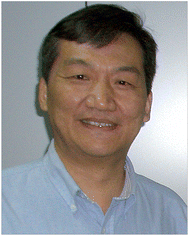 |
| | Plate3 Xinrong Zhang | |
Xinrong Zhang was born in Xian, China, received his Bachelor's and Master's degrees in Chemistry from Shaanxi Normal University, China, and his Ph.D degree in analytical chemistry from the University of Ghent, Belgium. He received a Professor position in the Department of Chemistry, Tsinghua University, China in June 1998. His current research interests are focused on developing optical and mass spectrometric techniques for biomedical and environmental analysis, including nanomaterial-based chemiluminescence sensor arrays, ICPMS-based immunoassays and ambient ion source for mass spectrometry. He has published over 150 papers in international journals and several book chapters on these topics. He chaired the 11th International Symposium on Luminescence Spectrometry and was a member of the Organizing Committee of BCEIA 2009.
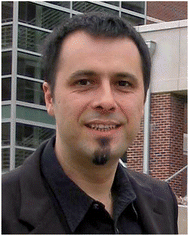 |
| | Plate4 Boris Mizaikoff | |
Boris Mizaikoff received his Ph.D. in Analytical Chemistry at the Vienna University of Technology in 1996. Heading the Chemical Sensor Laboratory (CSL) he has been responsible for numerous research projects in the field of chemical IR sensors, including 4 multinational projects funded by the European Union. In 1997, he joined the University of Texas, Austin, USA as a post-doctoral fellow. In October 2000, he finalized his Habilitation at the Vienna University of Technology. In 2000, he became a faculty member at the Georgia Institute of Technology, School of Chemistry and Biochemistry, heading the Applied Sensors Laboratory (ASL). In 2004, he became the Director of the Focused Ion Beam Center (FIB2 Center) at Georgia Tech, and has been a member of the Center for Cell and Molecular Signaling at Emory University, School of Physiology. In the autumn of 2007, he joined the faculty at the University of Ulm, Germany, as a Chaired Professor heading the Institute of Analytical and Bioanalytical Chemistry. His research interests focus on optical sensors, biosensors and biomimetic sensors operating in the mid-infrared spectral range, applications of novel IR light sources (e.g. quantum cascade lasers, system miniaturization and integration based on micro- and nano-fabrication, multifunctional scanning nanoprobes, scanning probe tip integrated nano(bio)sensors, focused ion beam (FIB) microscopy, development of chemical recognition interfaces for separation and sensing applications, chemometric data evaluation, advanced vibrational spectroscopic techniques, environmental analytical chemistry, process analytical chemistry and biomedical diagnostics. Dr Mizaikoff is an author/co-author of over 130 peer-reviewed publications, 14 patents and numerous invited contributions at scientific conferences.
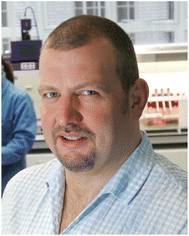 |
| | Plate5 Duncan Graham | |
Duncan Graham is Professor of Chemistry at the University of Strathclyde, Glasgow. He has a research group of around 30, and over 100 publications to date. He is also a co-founder of the Centre for Molecular Nanometrology and is a co-founder and director of D3 Technologies Ltd (http://www.d3technologies.co.uk).
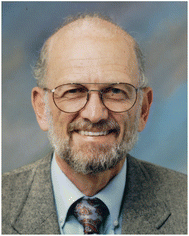 |
| | Plate6 Graham Cooks | |
Graham Cooks was born in South Africa and received a Ph.D. at the University of Natal, Pietermaritzburg and also from Cambridge University, UK. He is a Distinguished Professor of Chemistry at Purdue University where he has spent the bulk of his career. His interests involve the construction of mass spectrometers as well as studies of their fundamentals and applications. Early in his career, he contributed to the concept and implementation of MS/MS as a method of mixture analysis and to desorption ionization, especially matrix-based SIMS methods. These interests led more recently to the construction of miniature ion trap mass spectrometers and their application to problems of trace chemical detection. His work on ionization methods has contributed to the ambient method of desorption electrospray ionization (DESI). Applications of this method in tissue monitoring, forensics and in pharmaceutical applications are a major current activity. He is also interested in molecular chirality (‘handedness’) and the possible role of the amino acid serine in the biochemical origins of life. Graham Cooks is a past President of the American Society for Mass Spectrometry. He has been honored by awards from the American Chemical Society and other organizations and his work is highly cited. He has trained 107 Ph.D. students in analytical chemistry.
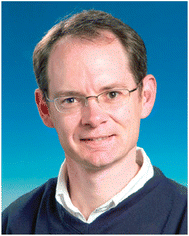 |
| | Plate7 Justin Gooding | |
Justin Gooding is the leader of the Biosensor and Biodevices Research Group at the University of New South Wales. He obtained a DPhil from Oxford University under the guidance of Prof. Richard Compton before becoming a post-doctoral research associate at the Institute of Biotechnology at Cambridge University. In 1997 he returned to his native Australia as a Vice-Chancellor Post-Doctoral Research Fellow at the University of New South Wales before taking up an academic position in 1998. He was promoted to full Professor in 2005. His research interests lie in biosensors, biointerfaces and surface chemistry.
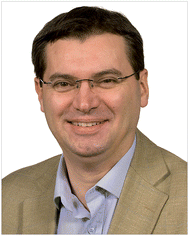 |
| | Plate8 Pavel Matousek | |
Pavel Matousek obtained his M.Sc. and Ph.D. degrees in physics from the Czech Technical University, Prague, the Czech Republic, the latter in partnership with the Rutherford Appleton Laboratory, Oxfordshire, UK. Since 1991, he has worked at the Central Laser Facility, Rutherford Appleton Laboratory in the areas of time-resolved and steady-state Raman spectroscopy, non-linear optics and high-power lasers. He pioneered the Kerr gated method for the rejection of fluorescence from Raman spectra and the concept of Spatially Offset Raman Spectroscopy (SORS), developing it for a wide range of applications including the non-invasive probing of biological tissues, security screening and pharmaceutical quality control. He has published over 150 peer-reviewed articles and filed 10 patents. Pavel's honours include the 2009 Charles Mann Award for Applied Raman Spectroscopy from the Federation of Analytical Chemistry and Spectroscopy Societies (FACSS), shared 2002 and 2006 Meggers Awards from the Society for Applied Spectroscopy (SAS) and the 2008 Measurement in Action Award from the Institution of Engineering and Technology (IET). Recently, he acted as the Chair of the Meggers Award Selection Committee of the SAS, the International Delegate of the Governing Board of the SAS and will serve as the Program Chair of FACSS 2011 (Reno, NV). He is also a member of the Editorial Board of Applied Spectroscopy. Pavel is presently a Fellow of the Science and Technology Facilities Council (STFC), a Visiting Professor of University College London and a director of Cobalt Light Systems Ltd, a spinout company commercialising SORS technology.
|
| This journal is © The Royal Society of Chemistry 2010 |
Click here to see how this site uses Cookies. View our privacy policy here. 







